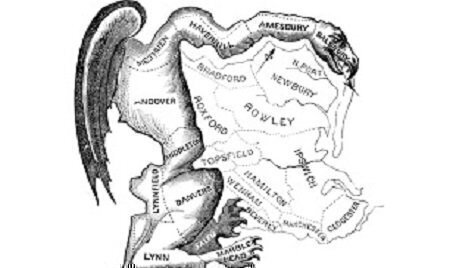Ending a search of more than three decades for a formula to judge the constitutionality of partisan gerrymanders of Congress and state and local legislatures, a divided Supreme Court ruled on Thursday that the effort is beyond the federal court's power and will now be abandoned.
 This was a major defeat for opponents of the long-standing practice, dating back to the early 1800s, of drawing election districts specifically to favor one political party’s candidates over their rivals at the polls.
This was a major defeat for opponents of the long-standing practice, dating back to the early 1800s, of drawing election districts specifically to favor one political party’s candidates over their rivals at the polls.
In a 5-to-4 decision written by Chief Justice John G. Roberts, Jr., the decision revived congressional maps drawn by North Carolina Republican lawmakers for all 13 of the state’s congressional delegation and by Democratic lawmakers for a single congressional district in western Maryland.
The Court did not endorse the idea of partisan gerrymandering, and it did suggest that the opponents of it still have other options. It mentioned that Congress has power to act, but partisan polarization appears so deep there seems little chance of action to curb the practice. The Chief Justice also wrote that state governments could act, and he mentioned a Florida change.
States also have the authority under their own state constitutions to curb the practice, as happened last year in a ruling by the Pennsylvania Supreme Court. The Supreme Court actually declined to review that decision.
Lyle Denniston has been writing about the Supreme Court since 1958. His work has appeared here since mid-2011.






